

HairPrime®
formula in United States
HairPrime® is a patented, natural herbal product for thinning hair/hair loss which help to promote thicker, healthier hair growth. It integrates western medicine and eastern herbal treatment.



HairPrime®
Herbal Shampoo
HairPrime Shampoo – formulated to avoid the use of high concentrations of harsh surfactants, occlusive conditioners, and other ingredients we consider adverse to maintaining a healthy scalp and environment for healthy follicles. The shampoo as formulated cleanses and prepares the scalp for an effective absorption of the clinically proven HairPrime Herbal Lotion.
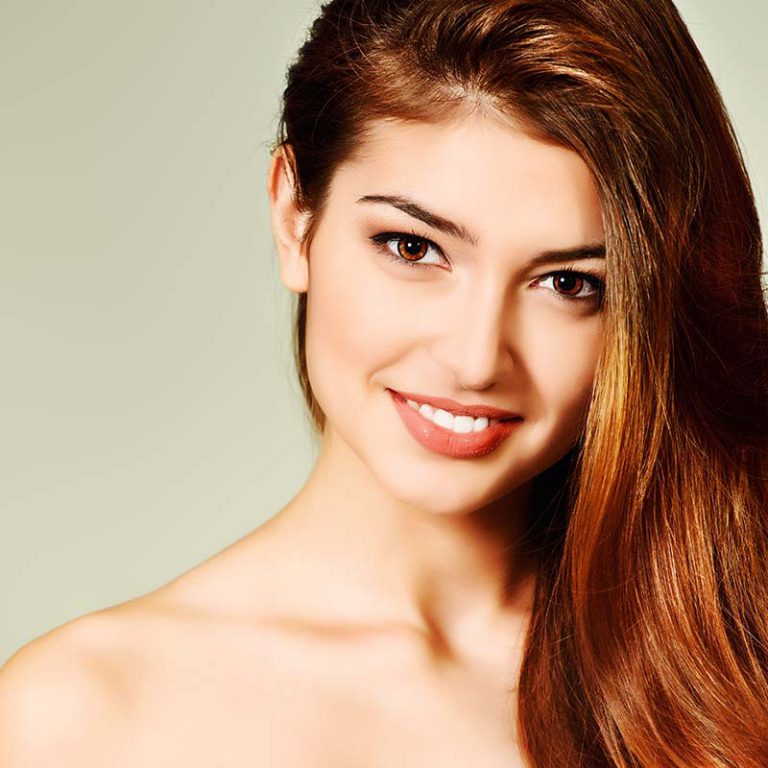

HairPrime®
Herbal Lotion
HairPrime Lotion – formulated and clinically tested to address the adverse effects of DHT in hair loss. Combines a proven concentration of our patented extract of certain compounds from specially selected high quality herbs with strategic ingredients intended to deliver an effective and sustained treatment to the scalp.
HairPrime®
Herbal Lotion
HairPrime Lotion – formulated and clinically tested to address the adverse effects of DHT in hair loss. Combines a proven concentration of our patented extract of certain compounds from specially selected high quality herbs with strategic ingredients intended to deliver an effective and sustained treatment to the scalp.




HairPrime®
Herbal Scalp Primer
HairPrime Scalp Primer – formulated to further prepare (“prime”) the scalp’s environment which may be adversely effected by hair spray, conditioners, gels, and other hair care products containing occlusive ingredients. Using a different extract of herbs and a different delivery system, the Scalp Primer enhances the treatment program.
Herbal Shampoo




The original clinical trials for HairPrimewere conducted by Clinical Professor of Dermatology at Stanford Jniversity School of Medicine.The most rigorous Double Blind Study was conducted by Dr.Joseph Greenberg,Associate Clinical Professor of Dermatoloay.University ofCaliforniaSan Francisco.The results of this study were widely reported.
includina: Journal of Dermatoloaical Treatment(SEP 1996)·New Orleans-American Academy of Dermatoloav 53rd Annual Meeting (FEB 1995)·Townsend Letter for Doctors &Patients(NOV1996)·22nd Annual HawaiiDermatology Seminar (JAN1998),New Orleans-American Academy of Dermatoloay 57th Annual Meetina (MAR 1999)
Herbal Lotion



The original clinical trials for HairPrimewere conducted by Clinical Professor of Dermatology at Stanford Jniversity School of Medicine.The most rigorous Double Blind Study was conducted by Dr.Joseph Greenberg,Associate Clinical Professor of Dermatoloay.University ofCaliforniaSan Francisco.The results of this study were widely reported.
includina: Journal of Dermatoloaical Treatment(SEP 1996)·New Orleans-American Academy of Dermatoloav 53rd Annual Meeting (FEB 1995)·Townsend Letter for Doctors &Patients(NOV1996)·22nd Annual HawaiiDermatology Seminar (JAN1998),New Orleans-American Academy of Dermatoloay 57th Annual Meetina (MAR 1999)

Scalp Primer





One Stop Service
Established in 1990, Beautiful Locations Ltd. has operated in Hong Kong for over 33 years. Beautiful Location Ltd. has been the sole agent of the HairPrime® hair growth series since 2003. The series was led by Dr. Issac Eliaz, with doctors, scientists, and herbalists in the United States. The patented formula Phydermanol® was introduced in 1989.
Phydermanol® can effectively remove Dihydrotestosterone (DHT) from the hair follicles, so that the hair can regenerate and grow stronger in the hair follicles in a healthy environment.


Customer First, Service Foremost
We always put our customers first and strive to provide quality service. We are not only providing high-quality hair growth products (HairPrime® Herbal Shampoo, HairPrime® Herbal Lotion, HairPrime® Herbal Primer) but also providing hair solutions by hair experts.
We provide one-stop service. Hair experts examine the condition of the scalp and hair follicles in detail, analyse the health of the scalp to give professional treatment advice to customers, including hair growth and hair care treatment and scalp care.
That’s why we have many success stories, with remarkable results. We are committed to offering you a safe and reliable hair care solution.
Clinically Proven



The original clinical trials for HairPrimewere conducted by Clinical Professor of Dermatology at Stanford Jniversity School of Medicine.The most rigorous Double Blind Study was conducted by Dr.Joseph Greenberg,Associate Clinical Professor of Dermatoloay.University ofCaliforniaSan Francisco.The results of this study were widely reported.
includina: Journal of Dermatoloaical Treatment(SEP 1996)·New Orleans-American Academy of Dermatoloav 53rd Annual Meeting (FEB 1995)·Townsend Letter for Doctors &Patients(NOV1996)·22nd Annual HawaiiDermatology Seminar (JAN1998),New Orleans-American Academy of Dermatoloay 57th Annual Meetina (MAR 1999)
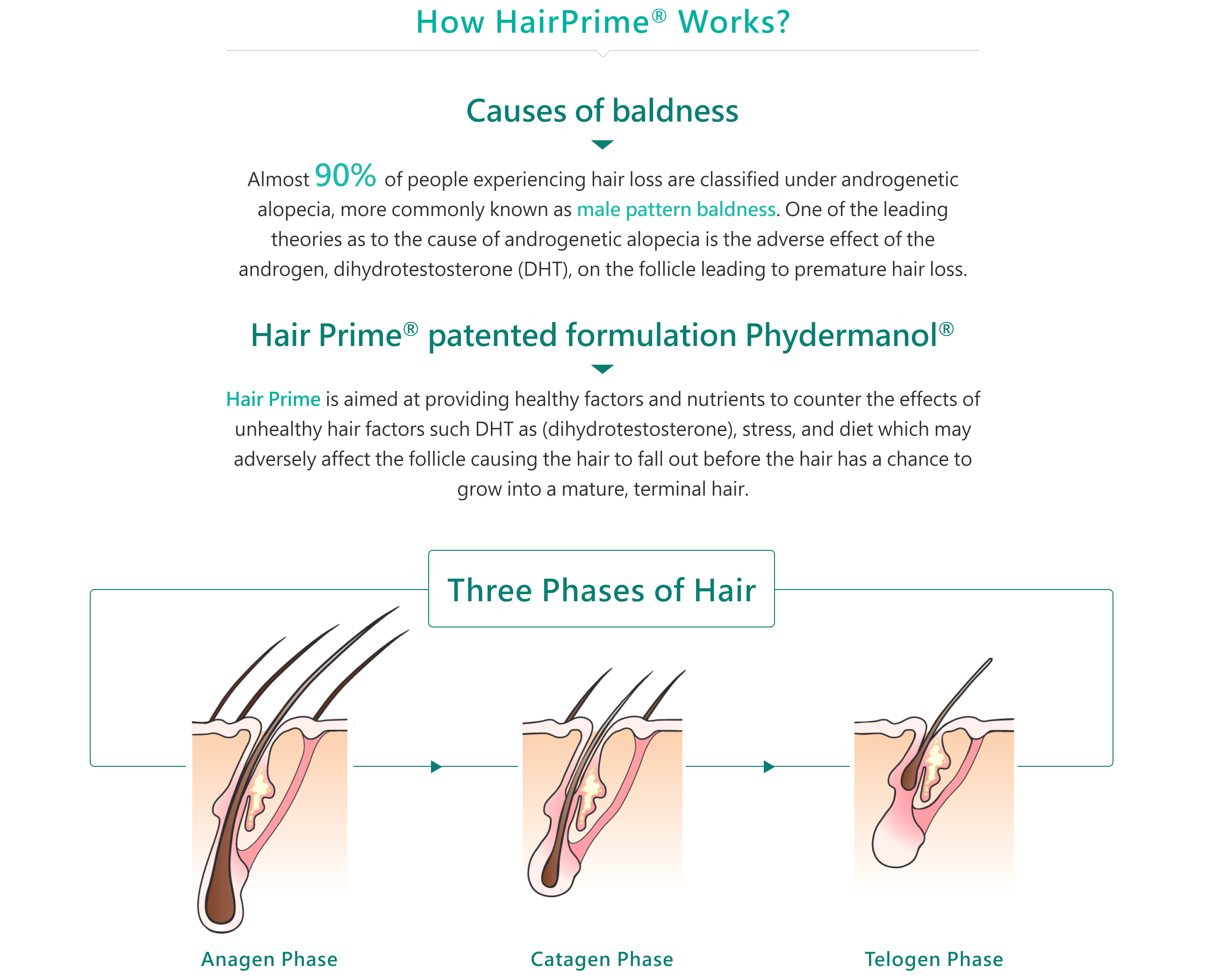
Ideal instruction


Structure of Hair
-
Hair is composed of keratin, which is part of the composition of the skin and nails.
-
The hair structure divides into three distinct layers: the cuticle, the cortex, and the medulla. The cuticle is a protective outermost layer, consisting of 7-9 overlapping layers of flattened cells like fish scales. The cortex contains lots of melanin, which is responsible for hair colour and thickness. Pigment cells grow from infancy until the hair is fully mature. If pigment cells stop growing before they are fully mature, it can lead to lack of colour or grey hair. The medulla is the innermost layer, consisting of fibrous cells and air spaces.
-
Hair roots are hidden in the scalp and protected by hair follicles. Each hair follicle is attached to capillaries and absorbs nutrients from the blood.
-
Surrounding the hair follicles are secretory glands that secrete a fat called sebum, which makes the hair shiny and waterproof.
-
Hair follicles are formed during infancy and stop after birth. The number of hair follicles will not be affected by acquired conditions. In other words, hair follicles will not decrease or disappear.
-
The scalp has an average of 100,000-350,000 hair follicles. Hair follicles can grow hair fibres, but it does not mean that each hair follicle has the ability to produce hair.
-
Productive hair follicles grow hair in a specific cycle. The cycle can be divided into three phases, Anagen (Growth), Catagen (Transition), and Telogen (Rest). The hair growth cycle will be affected by age, pathology, and various physiological factors.
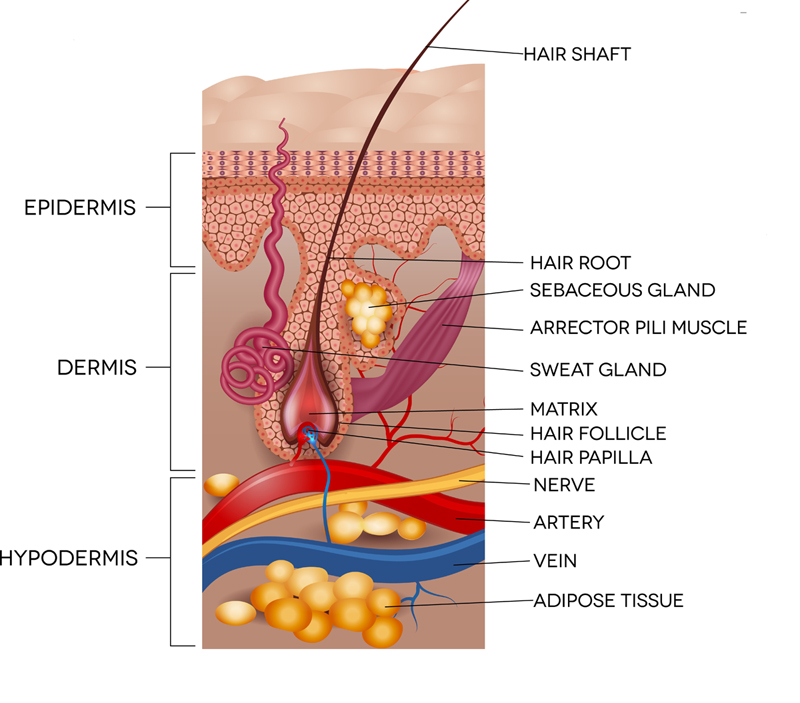
Hair Analysis






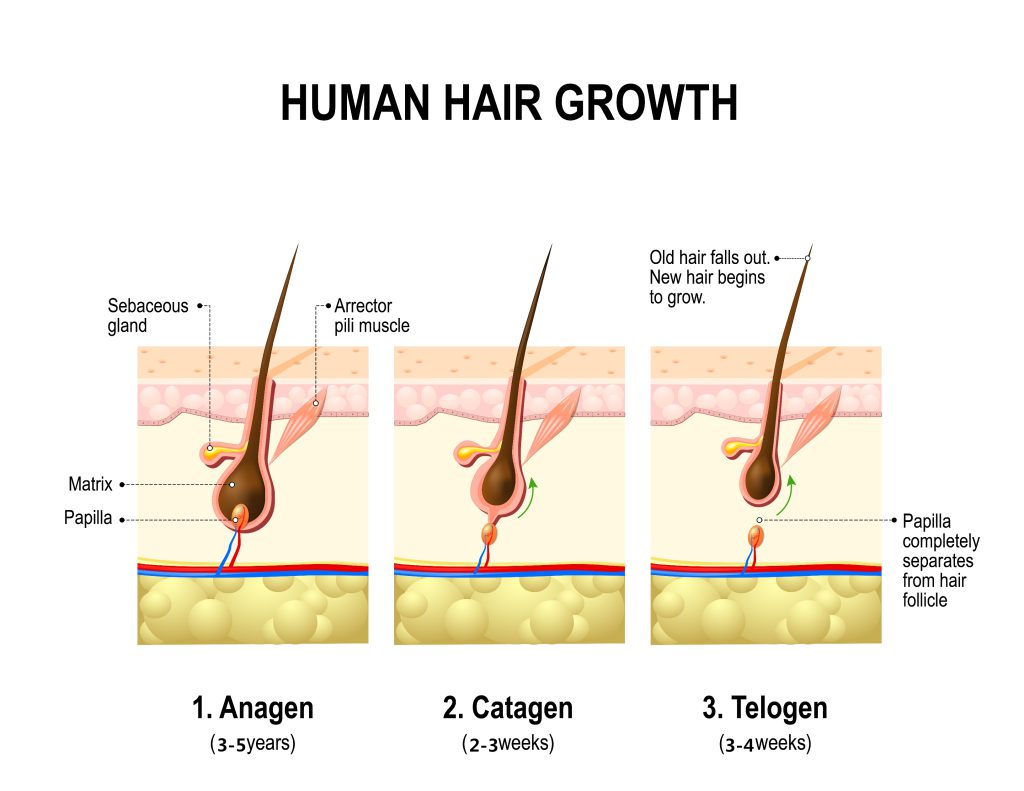
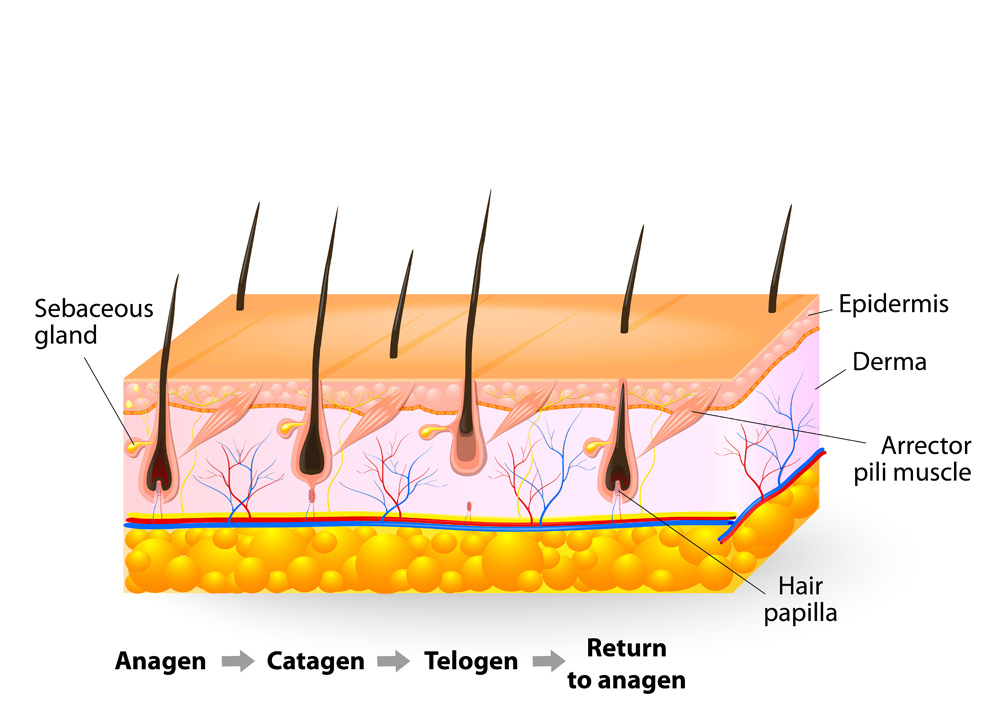
Stages of Hair Loss

Phase 1
Slight or no receding hairline.

Phase 2
The hairlines of the frontal bones and temporal bones move backward in a triangular shape.

Phase 3
Visible changes of the hairline. The hairline at the temporal bone is moved back significantly. With thinning hair or no hair coverage at the hairline.

Phase 4
The hairline at the temporal bone moved back in a limited extent. Hair loss is mainly on the top of the head.

Phase 5
The hairline at the temporal bone is more backward than stage III. Thinning hair or no hair on the top of the head. Thick and moderate hair coverage between the hairline and the top of the head.

Phase 6
The hair between the temporal bones and the top of the head begins to narrow and thin out.

Phase 7
The temporal bone begins to connect with the alopecia area on the top of the head, with only thinning hair in between.

Phase 8
The hair on the ears and the nape of the neck forms a semicircular shape, and the hair is sparse.
Causes of Hair Loss
- Pressure
- Hormonal changes (i.e. Menopause)
- Medicines (i.e. Antibiotic, Birth control pill, Thyroid drug, Amphetamine, Hormone medicines, Steroid, Chemotherapy)
- Diseases (i.e. AIDS, Cancer, Kidney failure, Lupus, High blood pressure, Thyroid imbalance, Liver disease, Acquired syphilis, Diabetes, Anaemia)
- Alopecia areata ~ Hair loss in clumps due to autoimmune response
- Alopecia Universalis ~ No hair on the entire body
- Wrong selection of hair products containing harmful substances
- Hair follicle nerve damage due to the habit of pulling hair
- Damaged hair ducts, such as long-term use of headgear to tie the hair tightly, resulting in inflammation of the hair follicles
- Overdose supplements (i.e. taking too much Vitamin A)
- Genetics (Androgenetic Alopecia)
Of all these factors, Androgenetic Alopecia is the most common cause of hair loss.
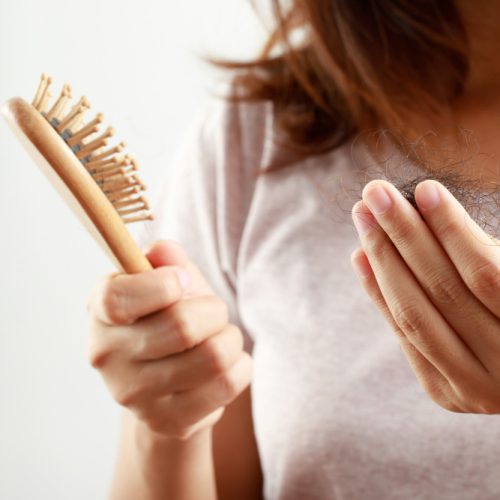
Testosterone | 5-alpha reductase | Dihydrotestosterone (DHT) |
> |
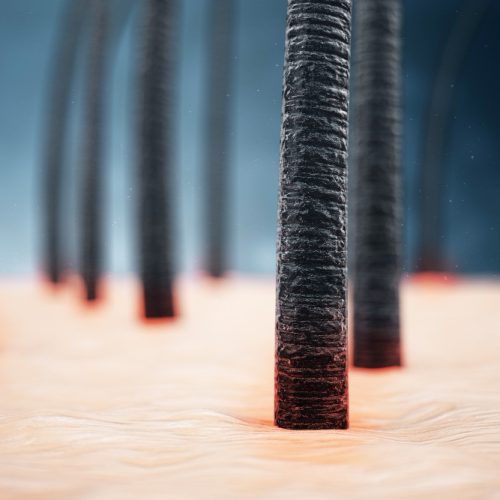
Studies have confirmed that the male hormone Dihydrotestosterone (DHT) will shorten the hair growth cycle. The hair will stop growing before it enters the fully mature stage, resulting in mature hair (coloured and thick) replaced by soft hair (short and weak hair). If the situation continues, the hair follicles will shrink, and the newly grown hair will become weaker, until the hair follicles can no longer maintain the healthy growth of hair, resulting in hair loss.
On the scalp, the receptors of hair follicle cells will inhale DHT, but not every hair follicle has receptors. But for men, most of the receptors will be distributed in the hair follicles on top of the head. That is why the majority of men go bald.
DHT is converted from Testosterone plus 5-alpha reductase.
5-alpha reductase can be divided into Type I and Type II. Type I is located on the skin tissue, including the scalp; type II is located on the tissue of the reproductive organs.
HairPrime® neither prevents DHT conversion nor inhibits 5-alpha reductase type II. Medical research has shown that inhibiting 5-alpha reductase type II will cause side effects. Men will reduce or lose their libido; during pregnancy, the development of the male foetus’s sexual organs will be blocked, which may cause sexual characteristics to become ambiguous and half-yin and yang.
Scalp Analysis
Healthy Scalp
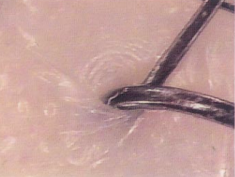


Oily Scalp



Dry Scalp



Sensitive and Damaged Scalp

Harmful Ingredients
Propylene Glycol
Propylene Glycol is commonly added to hair conditioners and moisturising lotions to give a smooth and nourishing feeling to your hair.
For industrial use, it is used as an antifreeze and pressure control liquid in drinking water systems. If used for a long time, it can be harmful to the skin. It replaces and drives away natural compounds that are beneficial to skin health while providing moisture.
If you are exposed to it for a long time, it will damage the liver and kidneys. Even low concentrations can irritate the skin and cause dermatitis.
Sodium Lauryl/ Laurent Sulfate (SLS)
Sodium Lauryl/ Laurent Sulfate (SLS) is commonly used in shampoo, facial cleansers, and shower gel to remove dirt and create foam. It is also used in industrial products to clean floors, as an engine degreaser, and in car wash soaps.
SLS is a corrosive substance, it can penetrate into the eyes, brain, heart, liver and other tissues and organs and stay for a long time. If it enters hair follicles, it may cause hair loss. Infections of the eyes can cause cataracts. Bath products containing this ingredient can cause rashes as the skin’s protective layer is eroded.
Using a corrosive method to achieve the cleaning effects will break down the lipids on the epidermis and damage the skin’s natural function of controlling and regulating humidity.
Diazolidinyl Urea
Diazolidinyl Urea is used as a preservative in some hair products. It contains “amide” which can make hair dry. It also releases “formaldehyde”, experiments have proved that it can cause lung cancer and damage DNA.
Urea is added to dilute hair conditioner.
Polyquaternium is often added to hair products to create a protective film that prevents hair conditioner from solidifying. However, polyquaternium contains “quaternary ammonium compounds”, which can cause hair to become dry and irritate the scalp.
Urea
Urea is added to dilute hair conditioner.
However, urea contains “amide” which can make the hair dry. Additionally, its hair care effect can only be worked on the surface of the hair.
Dimethicone
Hair conditioner containing “dimethicone” makes hair silky and smooth.
However, it can block water and nutrients from reaching the hair’s protective outer cuticle. This can eventually make the hair dry and brittle, and it may even weigh the hair down and make it appear flat.
